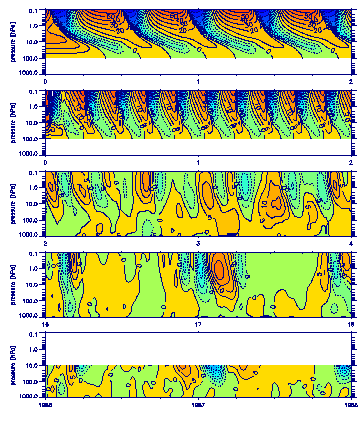
Previous: Ext. Abst. Next: Downward propagation Up: Ext. Abst.
Introduction
The understanding of the link between the troposphere and stratosphere has increased with the discovery (Thompson and Wallace, 1998) of a deep vertical coupling connected to the annular, circumpolar mode known as the Arcrtic oscillation. Furthermore, the downward propagation from the stratosphere to the troposphere found in both data (Baldwin and Dunkerton, 1999) and model (Christiansen, 2000) has raised the question as to what extent the stratosphere is controlling the troposphere.
This brief contribution will demonstrate the existence of downward propagation in simplistic as well as comprehensive models. Even simple models without a troposphere will show downward propagation in the form of stratopsheric vacillations (see also Holton and Mass, 1976; Christiansen ,1999, Scaife and James, 2000, Kodera and Kuroda, 2000). In the general circulation model experiments the structure and timescale of the downward propagation are in exellent agreement with the NCEP reanalysis.
Analysing the GCM experiments and the NCEP reanalysis shows that the downward propagation is driven by the vertical component of the Eliassen-Palm flux. A minimal model is constructed according to this idea.

Figure 1 The downward propagation in the northern hemisphere (60 N) for a series of models of increasing complexity and for the NCEP reanalysis (bottom). Zonal mean zonal wind anomalies are shown as function of pressure and time (years). The first panel is the minimal model defined below, the second panel is the Holton-Mass model, the third panel the ARPEGE GCM in perpetual January mode, the fourth panel is the ARPEGE GCM with the annual cycle included, and the bottom panel is the NCEP reanalysis. Data have been band-passed filtered to include only timescales between 30 and 350 days.